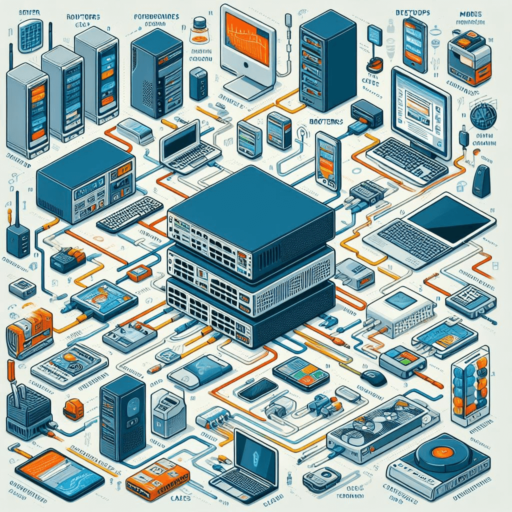In the digital age, computer networks form the backbone of communication and information exchange. Understanding the physical components of a computer network is crucial for anyone dealing with network setup, maintenance, or troubleshooting. From cables to routers, each component plays a vital role in ensuring seamless connectivity and data transmission.
Introduction to Computer Networks
Computer networks are intricate systems that enable the sharing of resources and information between multiple devices. They facilitate communication by linking computers, servers, peripherals, and other devices. The efficiency and reliability of a network heavily depend on its physical components.
Physical Components of a Computer Network
1. Cables and Connectors
Cables serve as the lifelines of a network, carrying data signals from one device to another. Different types of cables, such as Ethernet, fiber optic, and coaxial cables, are used based on the network’s requirements. Connectors like RJ45 and BNC ensure secure connections between devices.
2. Network Interface Cards (NICs)
Network Interface Cards, commonly known as NICs or network adapters, are hardware components that allow devices to connect to a network. They translate data between the computer and the network, ensuring compatibility and smooth communication.
3. Switches: The Backbone of a Network
Switches are intelligent devices that connect multiple devices within a network. They efficiently manage data traffic by directing packets only to the intended recipient, thus optimizing network performance. Unlike hubs, switches operate at the data link layer of the OSI model, making them more efficient and secure.
4. Understanding Routers
Routers are responsible for directing data packets between different networks. They analyze the destination IP addresses of incoming packets and determine the most efficient path for transmission. In addition to wired connections, modern routers often incorporate wireless capabilities, enabling Wi-Fi connectivity.
5. The Role of Hubs in Networking
Hubs, although less common in modern networks, serve a similar purpose to switches. However, unlike switches, hubs indiscriminately broadcast data to all connected devices, leading to network congestion and reduced efficiency. Due to their limitations, switches have largely replaced hubs in contemporary network setups.
6. Repeaters: Extending Network Signals
Repeaters amplify and regenerate signals as they travel across long distances. They play a crucial role in extending the reach of networks, particularly in large-scale installations where signal degradation is a concern.
7. Modems: Bridging Networks
Modems, short for modulator-demodulator, facilitate communication between digital devices and analog transmission mediums. They convert digital data from computers into analog signals suitable for transmission over telephone lines or cable systems, and vice versa.
Maintaining and Upgrading Network Components
Regular maintenance of network components is essential to ensure optimal performance and reliability. This includes inspecting cables for damage, updating firmware on routers and switches, and monitoring network traffic for anomalies. Additionally, staying abreast of advancements in networking technology allows organizations to upgrade their infrastructure to meet evolving demands.
Conclusion
Understanding the physical components of a computer network is fundamental for anyone involved in networking. From cables and connectors to routers and switches, each component plays a crucial role in enabling seamless communication and data exchange. By comprehending how these components function together, individuals can effectively design, deploy, and maintain robust network infrastructures.
FAQs
- What is the main function of a router?
- Routers determine the most efficient path for data packets to travel between different networks, facilitating interconnectivity.
- How do switches differ from hubs?
- Unlike switches, which selectively forward packets to their intended recipients, hubs broadcast data to all connected devices, leading to network congestion.
- Why is it essential to maintain network components?
- Regular maintenance ensures optimal performance, reliability, and security of the network, minimizing downtime and potential vulnerabilities.
- Can I use different types of cables in the same network?
- Yes, it’s possible to use different types of cables within the same network, depending on the requirements and compatibility of devices.
- What are the benefits of using fiber optic cables?
- Fiber optic cables offer high bandwidth, immunity to electromagnetic interference, and long-distance transmission capabilities, making them ideal for high-speed data networks.
Do you like to read more Blog content? Read our blogs at PintoraBlogs

